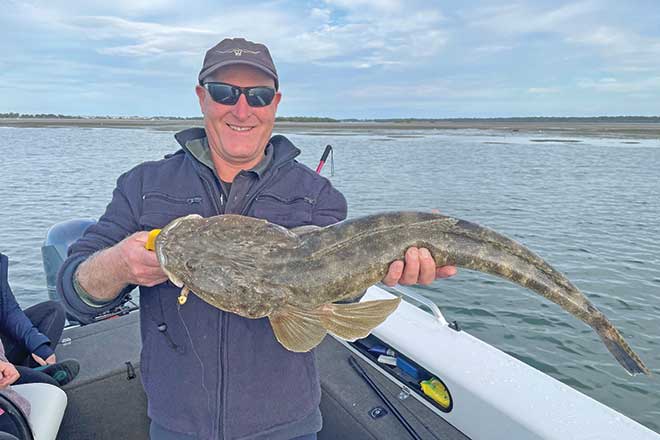How good is the feeling of knocking off for some holiday time.
The upside is often more opportunities to fish, while the downside is that this fishing time is frequently shared with more people.
In this article, I wanted to share some tips for getting the most out of fishing the holiday period, escaping the crowds and catching more fish in pressured environments.
Let’s fish!
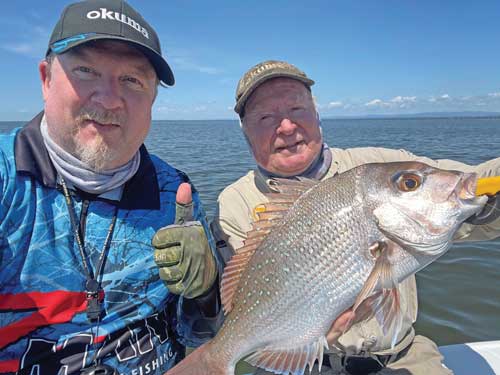
Peak bite periods
Low light periods of dawn and dusk have long been regarded as peak bite periods.
Less light penetrating the water means less visibility for the fish and less shadows cast by vessel, angler and even birds.
This will allow you to fish shallower areas and get closer to the fish before they realise you’re there and get spooked.
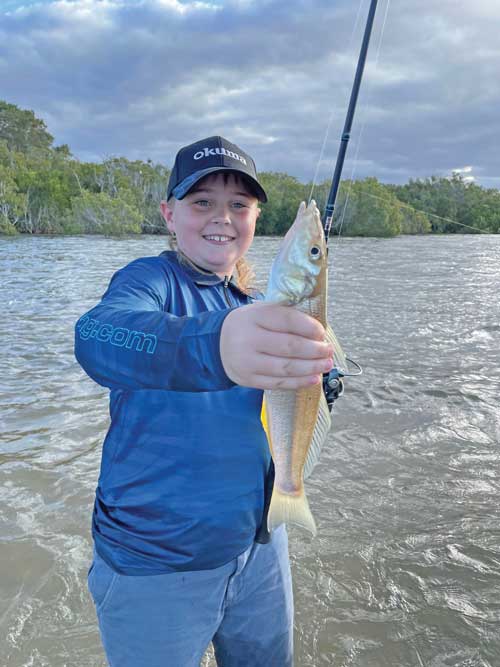
Stealth is still an important factor when it comes to noise from motors, movement in the boat and anchoring.
The old saying is the early bird gets the worm.
Getting out before the crowd, noise and disturbances on the water will catch you more fish, while also allowing plenty of time for other family activities during the holidays.
One of my favourite times to fish is the afternoon/dusk bite, when most of the boats have headed back to the ramp and the bait, and in turn fish, come back to life.
The last couple of hours of daylight can produce a hot session on a stack of different species.
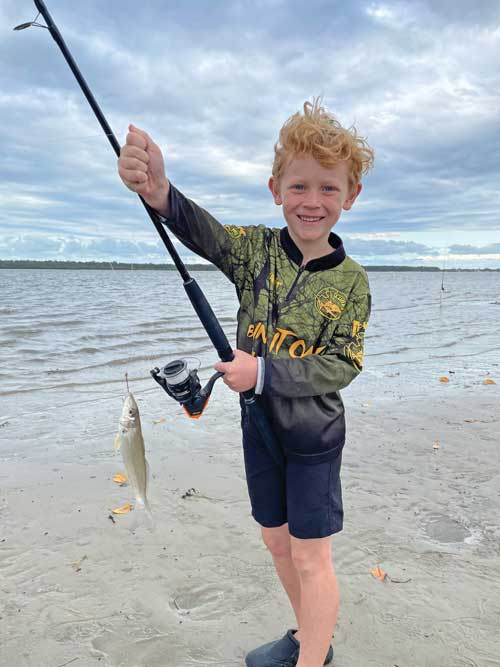
Night fishing
If your vacation days are busy with family activities, night fishing is a great option and it can be cooler and more comfortable than the summer scorchers, just make sure the bug spray is packed.
A couple of hours after dark may be enough to get a few fish and scratch the itch, with a prime starting point being around artificial light, such as bridges, streetlights and boat ramps.
Artificial light attracts bait and in turn predators, so casting your bait or lures around the shadow lines can be extremely effective.
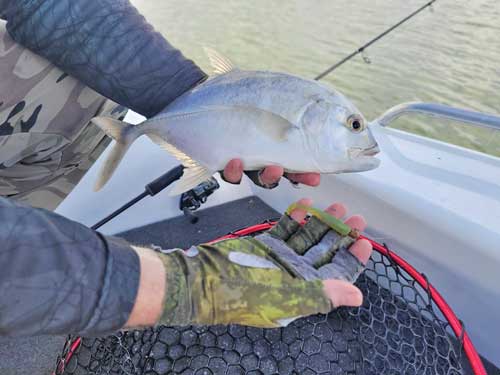
When it comes to lure selection for night fishing, I’m a fan of soft plastics – with their single hook simpler and safer in low light and the ability to change jig head weight to effectively fish the entire water column, minimising the amount of gear I need to carry with me.
I generally select darker solid silhouette colours for night fishing, with added glitter to catch the available light.
A few Z-Man favourites would include Gold Rush, Calico Candy, New Penny and Houdini.
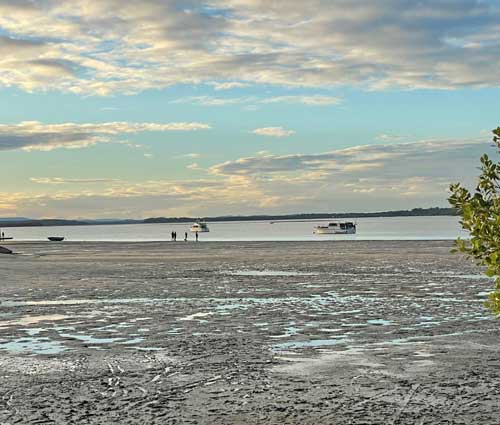
Whether fishing day or night, it’s important to think like a fish and consider where the fish might be travelling and why.
Fish will often have an area where they enter and exit key structure, such as flats, rock walls, mangrove lines and jetties.
So consider key points of travel, such as deep water, drains, weed edges, shadow lines, ridges, channel edges and other variables that may concentrate fish or have a continual influx of them throughout the tide, and focus in these areas.
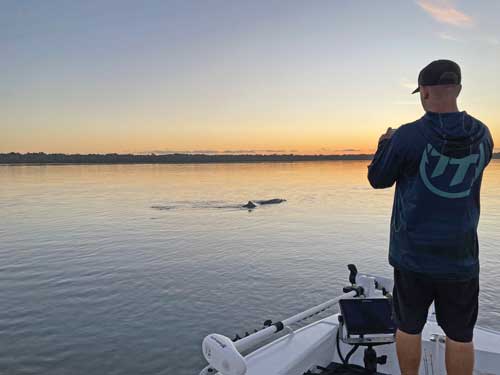
Tides
If you have limited windows of time to fish or are wanting to get the kids onto a fish over the break, remember to check the tide times for the areas you’re fishing.
The middle stages of the tide can often be the toughest because fish transition from one area to another, so you may be waiting a while between bites.
I have found the peak bite times to be around the tide changes in many areas – when considering ‘high tide spots’, focus efforts on the last hour or two of the incoming tide and first hour or two of the outgoing, and when fishing ‘low tide spots’, focus on the last of the run-out and start of the run-in.

This can often give you two cracks at it too, with the fish firing on one stage of this change, the run-in or run-out, and you having both covered.
High tide spots I like to fish include areas that are exposed at low tide but hold enough water for your target species on the high.
Fish will move up onto these areas to feed, meaning they are generally actively hunting and will readily accept your lures and bait.
Other high tide areas include key structure that holds bait and in turn attracts fish.
Low tide favourites include channel edges, the mouths of drains and structure that is easier to access when the tide is out, especially if it is in close proximity to deeper water.
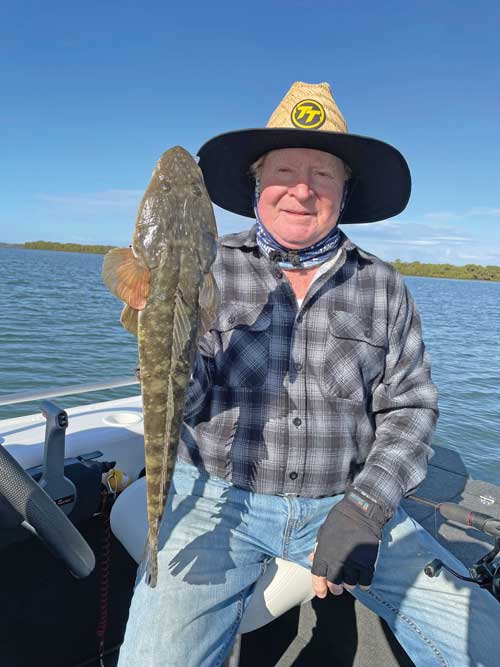
Bait is great
If you’re a lure angler, don’t forget the bait-fishing option.
Kids love gathering the bait – sometimes more than fishing it – so this can make for a great holiday activity.
It can also be relaxing to drop it back a gear, cast out a couple of bait and kick back.

The best bait is locally sourced live or fresh bait, which is often now available from local tackle stores.
Alternatively, quality frozen bait are available.
Favourites for the river and estuary include yabbies, worms, pilchard, chook gut and mullet gut, with fresh mullet and garfish flesh bait also a winner.
A key with bait fishing is to ensure you have a rod with a nice soft tip, allowing the fish to bite and eat the bait, without feeling too much resistance.
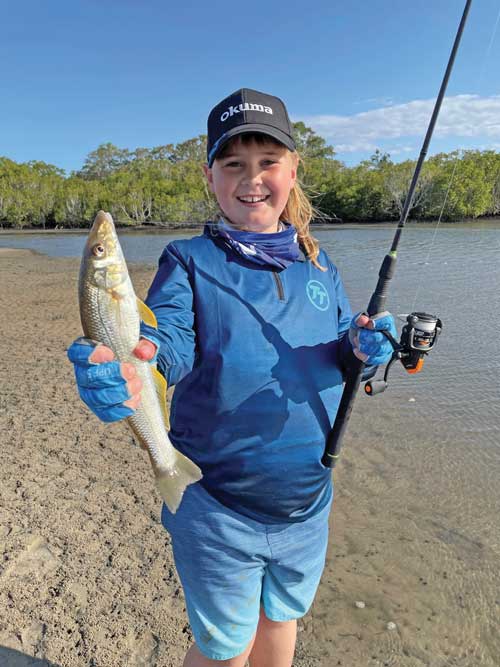
My go-to bait rods are Okuma’s LRF GEN2, Barbarian and Barbarian Pro ranges, with a decent spinning reel and Platypus Pulse mono line.
The stretch in the monofilament is beneficial when bait fishing and I will always select a quality Australian-made Platypus monofilament.
Especially when fishing with kids – to avoid the tangling and casting issues that come with cheap stiff line that resembles whipper snipper cord.
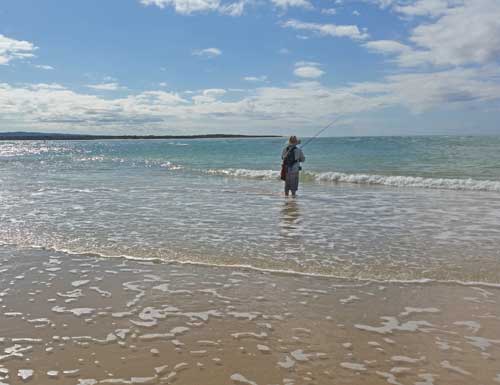
Lure fishing tips
Most of my fishing involves lures and I help a few kids catch fish over the holidays, so I often stick with the simplicity and versatility of soft plastics.
The single hook minimises the chances of snagging, tangling and hooking people, which is perfect when fishing with children.
Here are a few tips for fishing soft plastics in the holiday season.
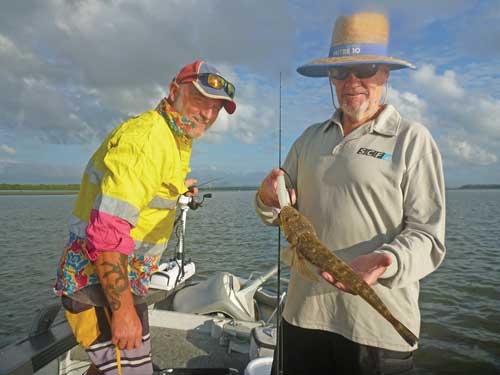
Jig head weight
Increasing your jig head weight by one size, for example 1/8oz to 1/6oz or 1/6oz to 1/4oz, will allow a long cast and get the soft plastic down in the water column, which is perfect for kids who want to continually cast it out and wind it in, or have you doing their casting for them.
This will allow each cast to be out there a little longer and the plastic to spend more time in the strike zone for most species.
If the area is weedy or snaggy, check out the range of TT weedless jig heads.
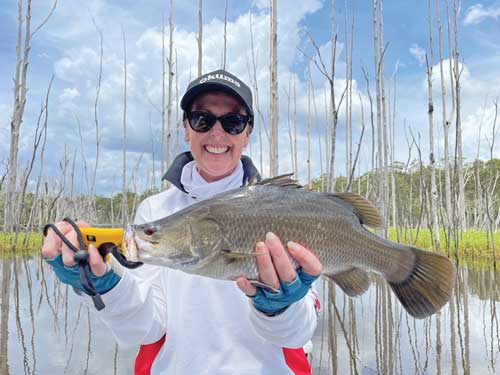
Downsize
Downsizing your soft plastic will often produce more action for a wider variety of species, which can be great when fishing with children or simply targeting fish in the more pressured vacation period.
I commonly fish a 2.5” plastic, with favourites being the Z-Man GrubZ, Slim SwimZ and PrawnZ, commonly rigged on a size 1 or 1/0 TT jig head.
All three of these plastics will catch bream, flathead, trevally, grunter and more, while also punching well above their size and accounting for some trophy captures.
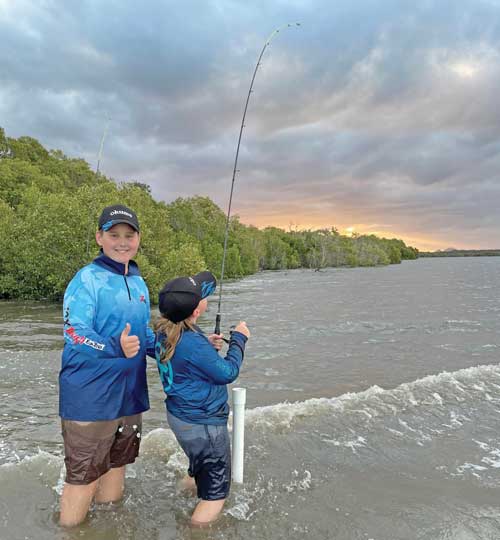
Scent
Adding scent to your lures, and even bait, can mask foreign odours such as fuel and sunscreen, while also attracting fish and triggering strikes.
My go-to is Pro-Cure Super Gel Scent, which I apply every 30 or so casts.
It sticks on well and it contains bite stimulants, ultraviolet enhancements and real ground bait.
This maximises your chances of getting fish to eat and hang on longer, even if you don’t have the retrieve techniques spot on.
A couple of go-to flavours for me are Mullet and Sardine/Pilchard.
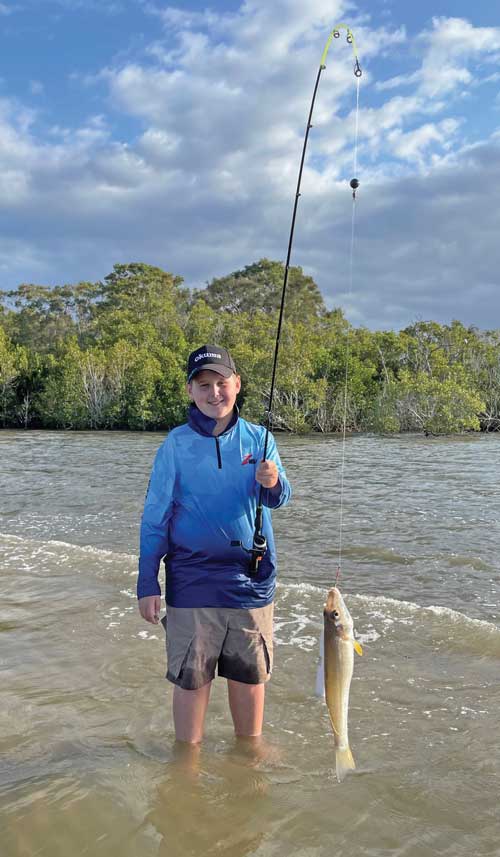
Do the miles, get the smiles
Holiday periods can mean busy boat ramps, so I commonly spend more time fishing land based and from the standup paddleboard or kayak, which I can launch and retrieve anywhere to access less-pressured water and beat the boat ramp lines.
Google Maps is a great starting point for locating fishable water and access points, with bridges, parks and forestry tracks often allowing access to areas that are less pressured.
Even when fishing in the boat, I will try to dodge the crowds by fishing earlier or later, as mentioned previously, but also by exploring new water and getting away from the crowds.
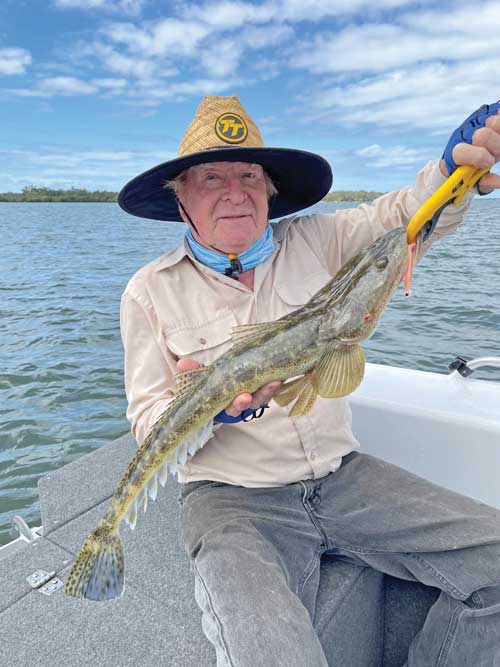
This could mean travelling a little further, getting up onto the shallow flats and weed beds that people often avoid or sneaking further up the creeks in the area.
By finding less-pressured water, the fish will often respond more aggressively to your presentations, and you may just discover a new area or technique that you can fish throughout the year.
I have also found that on good days, boats will often travel further away from the launch point, creating some good opportunities much closer for you.
Being prepared – seizing those average weather days can also produce the goods, with less anglers fishing and conditions that can encourage the fish to feed more aggressively.
Walking or paddling further, preparing for bad weather days, exploring alternative launch points… there’s no doubt that by doing the miles can definitely result in you getting the smiles.
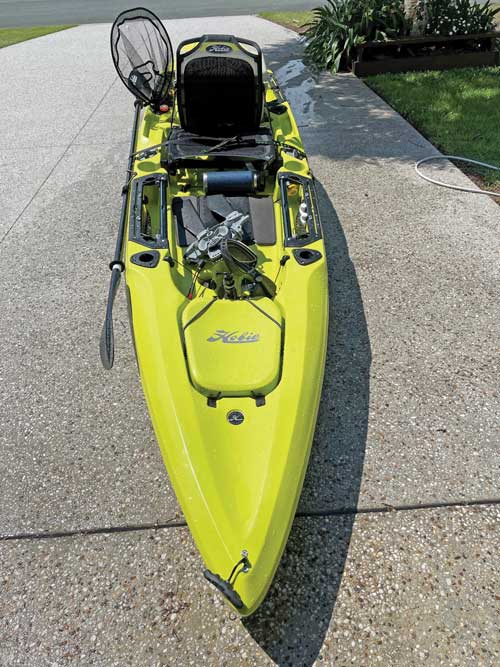
Bait, structure and bust ups
Don’t forget the basics.
Whatever you decide to do to avoid the crowds or find the fish, don’t forget to keep an eye out and pay attention to what the environment and conditions are telling you.
Make note of the key man-made and natural structure in the area, as well as of the secondary structure on offer that may hold bait or fish.
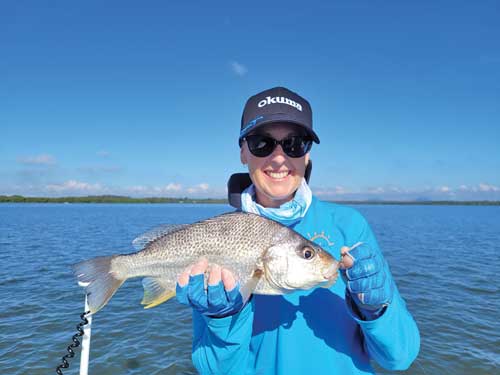
Find areas that are holding bait and attempt to match this bait and mimic its movement.
Finally, keep an eye out for bow waves of bait being pushed along by fish, bow waves from fish themselves, nervous bait flicking or shimmering on the surface and predatory fish sipping down bait or busting them up on the surface.
If you have time off, enjoy your break – hopefully these tips will help you get hooked up to a few more fish while dealing with the holiday crowds.
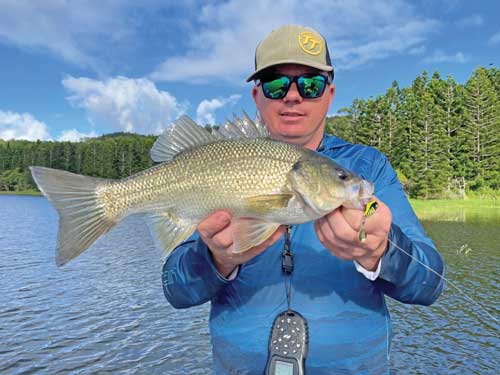
If you’re not holidaying, I hope you found a tip or two to help you work around the crowds that you might find fishing some of your favourite spots.
The vacation period can be a great time to explore some new areas, target different species and experiment with some different techniques that may not only catch you more over the holidays, they may in fact become a favourite in your day-to-day fishing adventures.
See you on the water.
 Bush ‘n Beach Fishing Magazine Location reports & tips for fishing, boating, camping, kayaking, 4WDing in Queensland and Northern NSW
Bush ‘n Beach Fishing Magazine Location reports & tips for fishing, boating, camping, kayaking, 4WDing in Queensland and Northern NSW

